32 Iconic Moments From The Truman Show
Good Afternoon, Good Evening And Good Night.
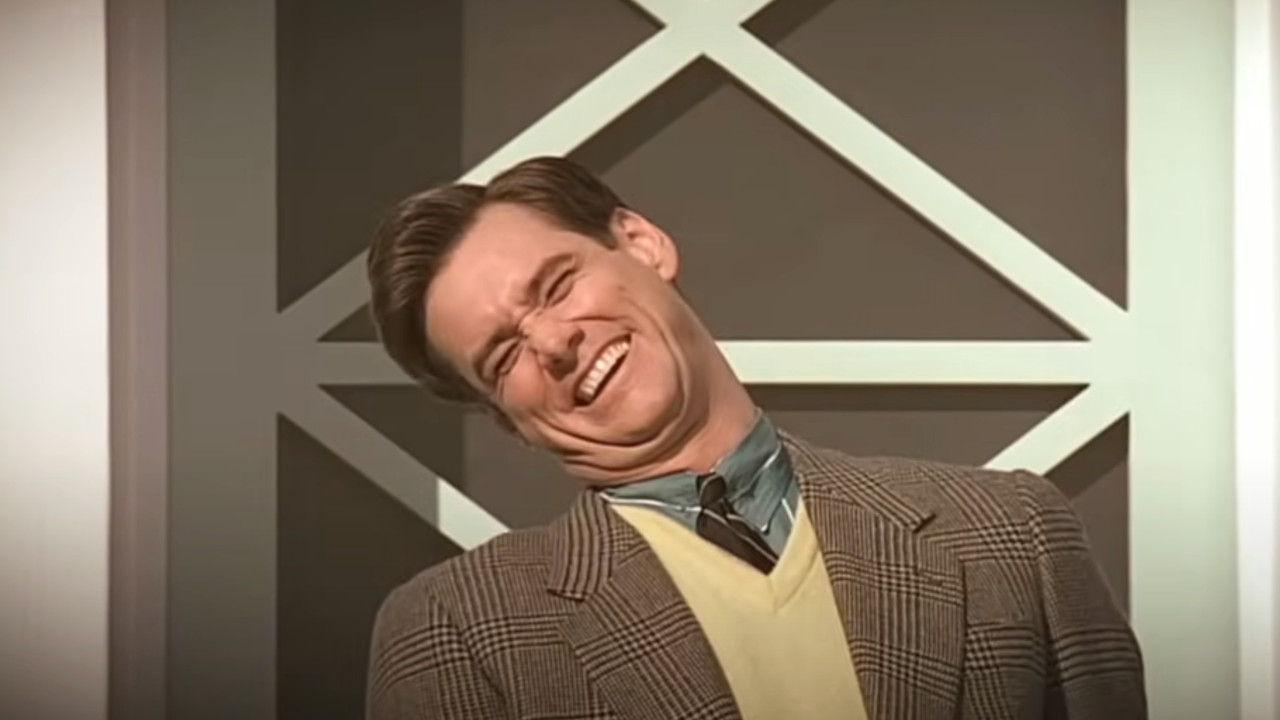
Certain movies stick with you. There’s just something about them that lingers and never fully goes away. The Truman Show is one of those movies for me. Decades after I saw it for the first time, the performances and the larger themes still mean something to me. Everytime I rewatch it, I still connect in a visceral way, even as I change as a person and enter different stages of my life. I'm definitely not the only one who feels that way either, as many celebrities have cited it as inspiration.
Perhaps it’s because the movie has so much to offer. People often focus on the movie’s central theme of consent, and rightfully so, but it’s actually filled with iconic moments, performances and creative choices that speak to a whole lot more than just that. So, let’s celebrate why it works so well. Let’s run down the best of the best from the movie and talk about what makes those iconic parts of The Truman Show so special (at least to me).
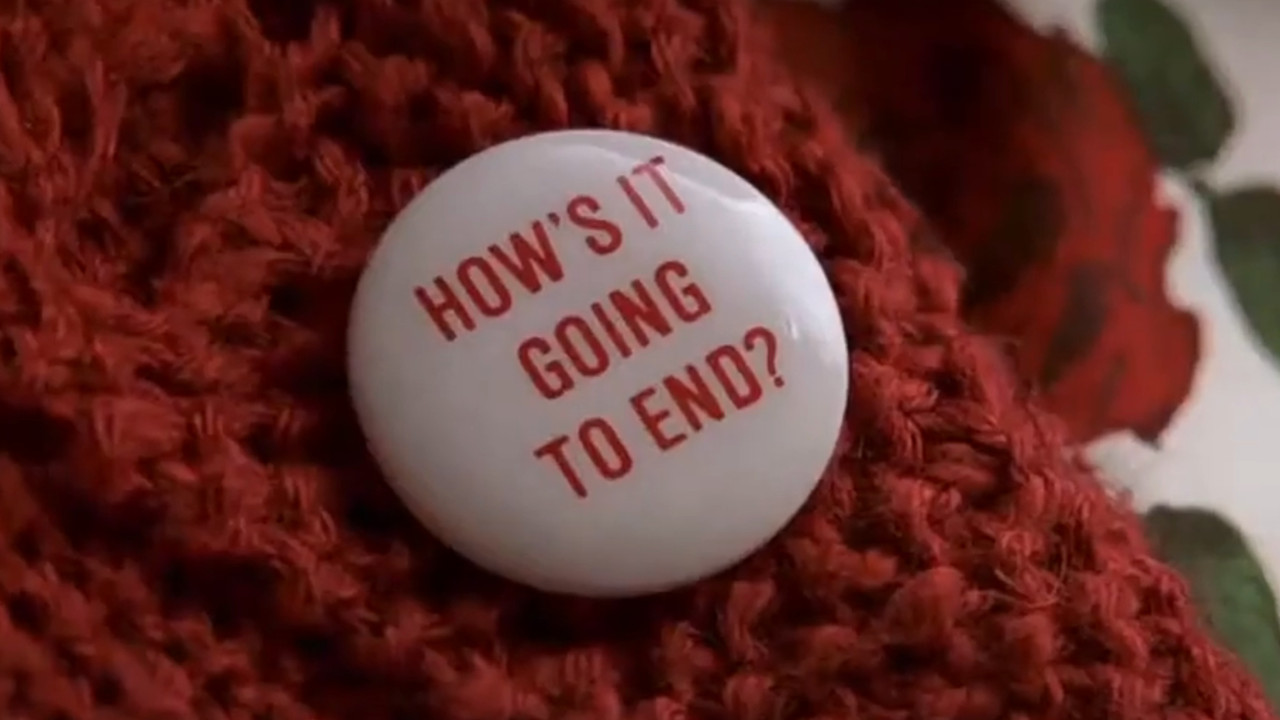
The How’s It Going To End Button
During college, I worked at a veterinary hospital, and we were allowed to put buttons on our smocks. I had a few, but my favorite was this iconic button from The Truman Show that Lauren wears. She wants to know how The Truman Show is going to end, but deep down, all of us want to know how all of it is going to end.
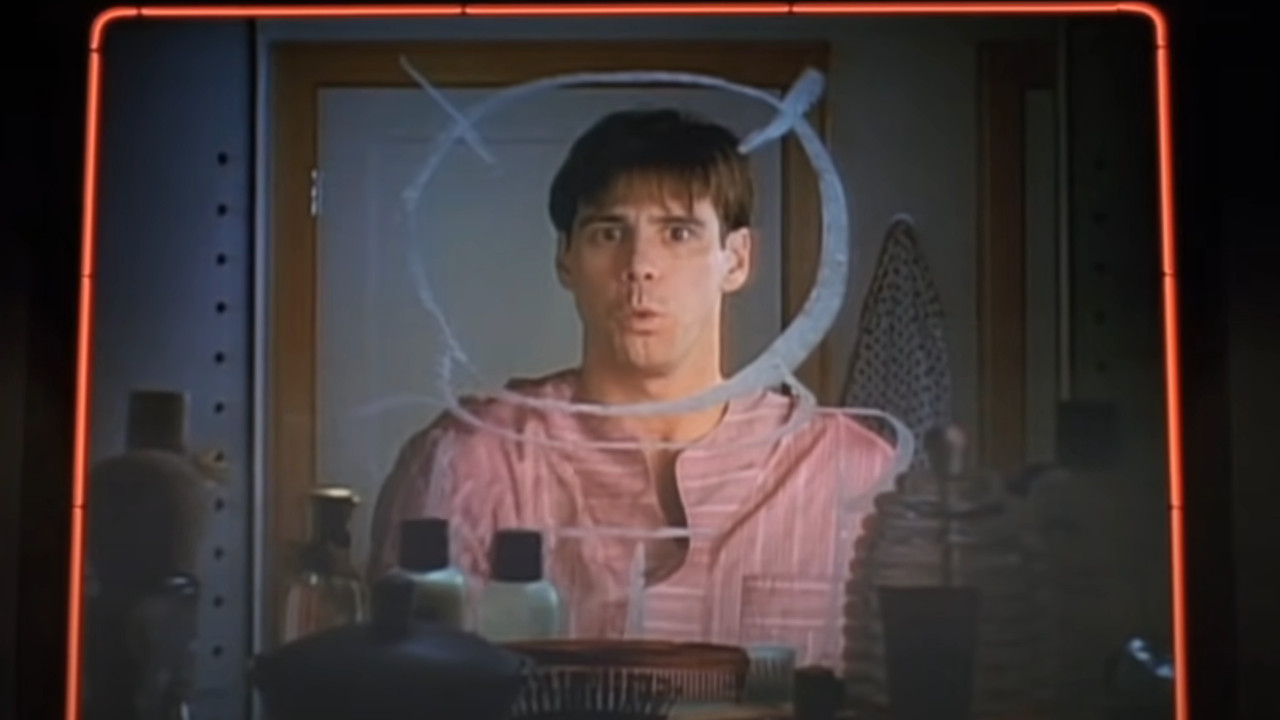
Truman Talks To The Mirror
At the beginning of The Truman Show, we see our hero talking to bathroom mirror, fantasizing about an adventurous life. The implication is that we all relate to his desire to want more, but it also feels like a personal moment specifically for him. As his concept of reality shifts, however, we see him once again talk to the mirror, but now there’s some doubt as to whether the moment is for him or for us.
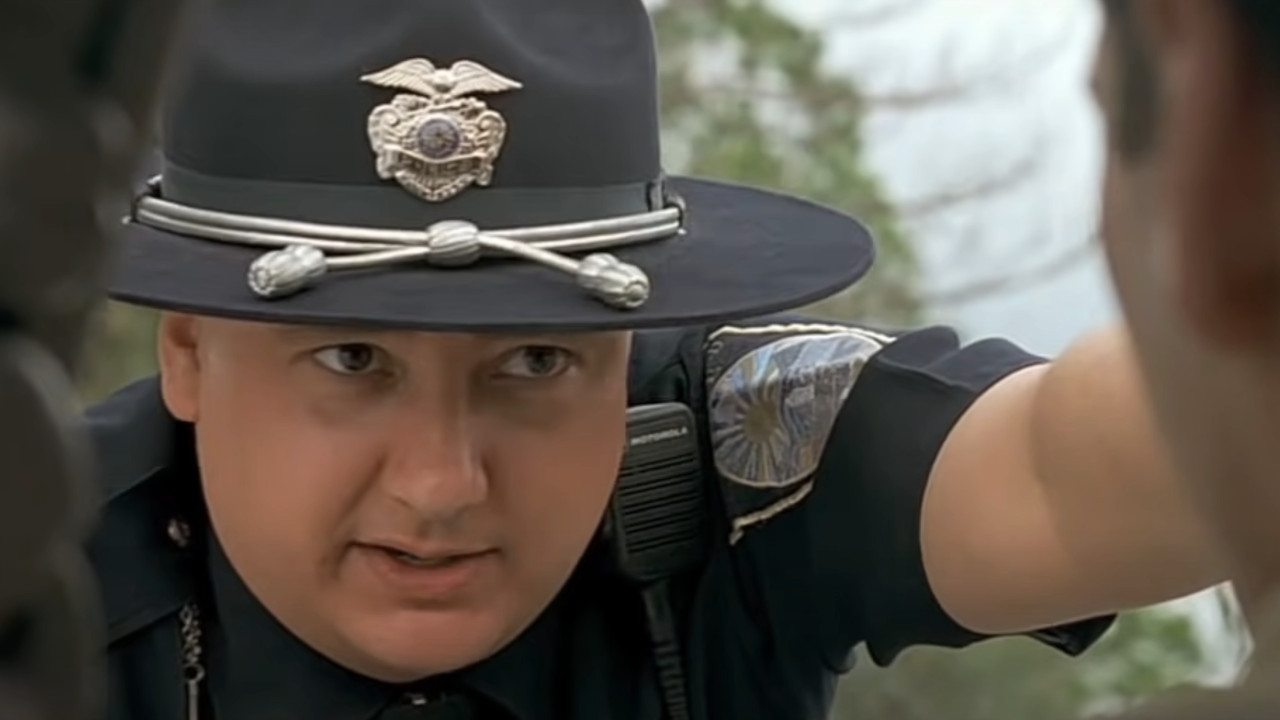
"Truman"
As Truman struggles to learn the truth of his existence, he attempts to flee and hits roadblock after roadblock. Finally, a cop he’s never met before tells him to turn around, but in doing so, directly addresses him as “Truman,” fully solidifying in his mind that something is wrong and he must be at the center of all of it. It’s one of the movie’s most powerful moments, and it’s also one of its simplest.
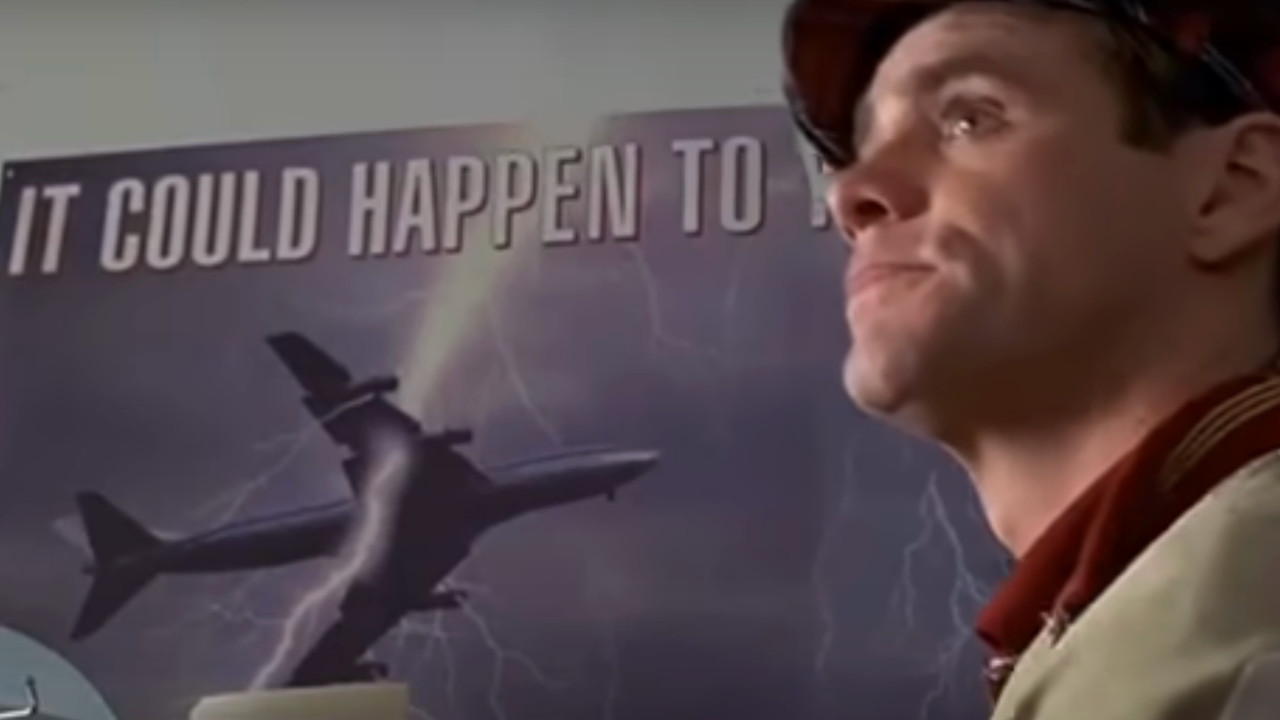
The Posters At The Travel Agency
I suspect most people who went to see The Truman Show in 1998, knowing only it was the new Jim Carrey movie, were surprised by how little comedy the movie has to offer, but if you’re observant, it’s often quite humorous in a clever way. My favorite example is the posters at the travel agency, which feature travel friendly images like a plane being struck by lightning. It's that mix between dark and light that helps it regularly rank among the best Jim Carrey movies.

The Drowning
Nothing about Truman’s involvement in The Truman Show is OK. He’s never given a choice. It’s wrong. Period. But the single moment that makes that the most clear (other than perhaps the storm during his escape) is the “drowning” of his father. His death causes severe trauma and psychological consequences in Truman, but as an audience, we find out it’s all a ruse, meant to inflict that damage and keep him from exploring. It’s beyond heartless.
Your Daily Blend of Entertainment News

The Product Placements
Another source of levity throughout The Truman Show is the product placements. Truman is largely unaware of what’s going on (until he’s suddenly not), but you can tell how his reaction changes whenever he senses something is stiff or off with the language. It reads to him as inauthentic in the same way bad product placement in a movie reads to viewers as inauthentic.
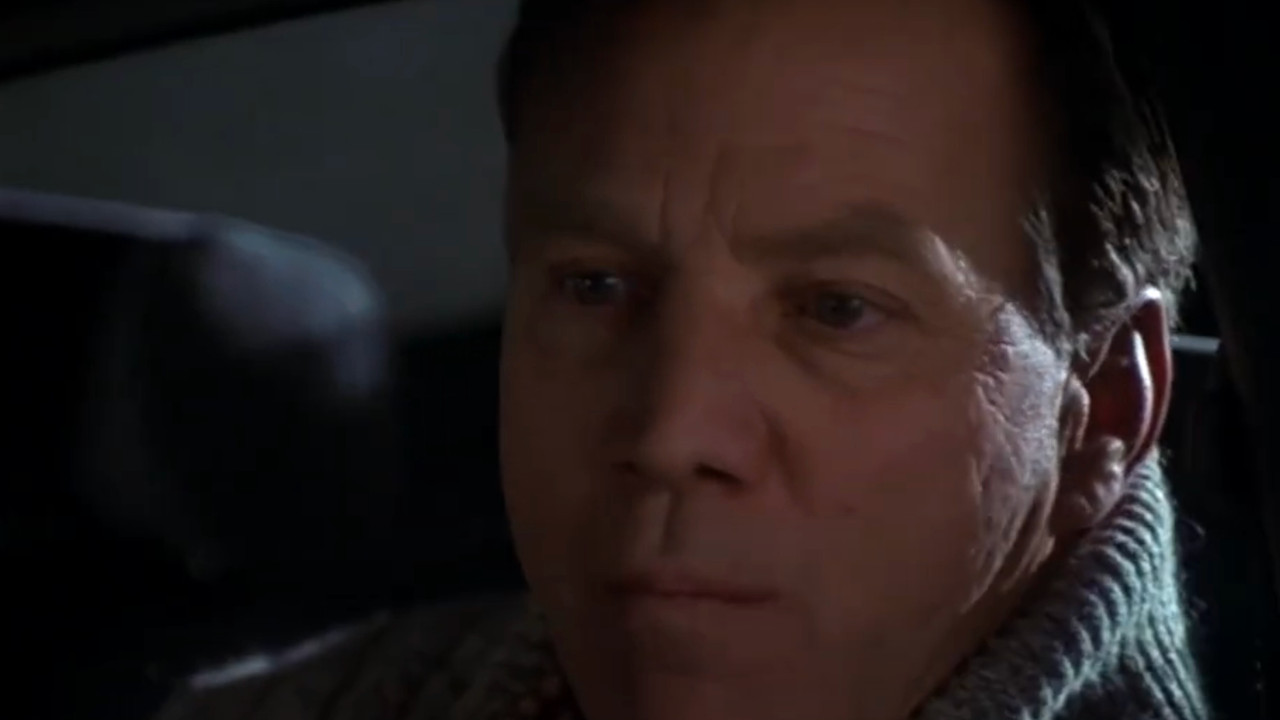
Fiji
To those of us in The United States, Fiji feels like a random island on the other side of the world. In Truman’s case, it also literally is, but psychologically, Fiji may as well be Cleveland, Ohio or Iceland or anything outside the bubble that’s been created for him. He hasn’t really been anywhere. He’s on Seahaven Island, and every other place in the world is Fiji. So, when Lauren’s dad says they’re moving to Fiji, it becomes a location outside Seahaven that feels real.
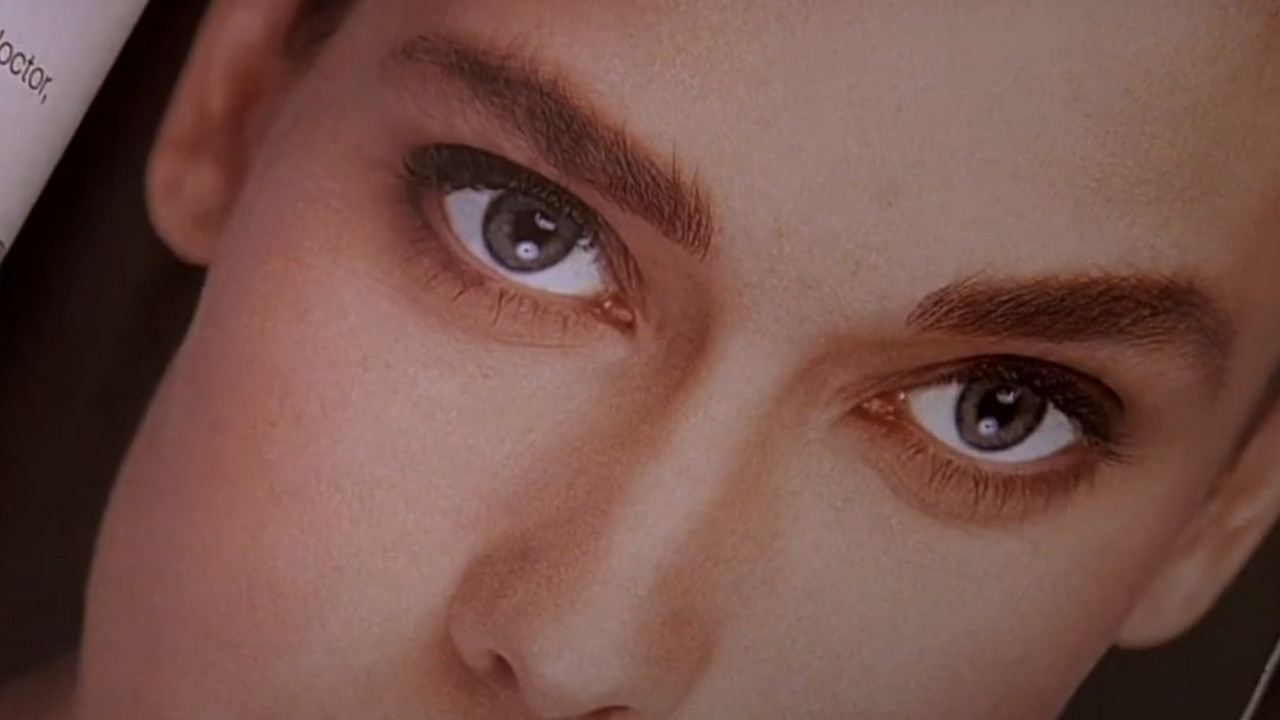
Truman's Frankenstein Picture
I’ve watched The Truman Show with easily ten different people in my life across various viewings, and Truman’s homemade picture of his lost love always produces an extreme reaction. Some people are creeped out. Others think it’s a beautiful tribute to the girl that got away. Either way, it shows the audience how Lauren never left his mind, and it’s an iconic moment in the movie.
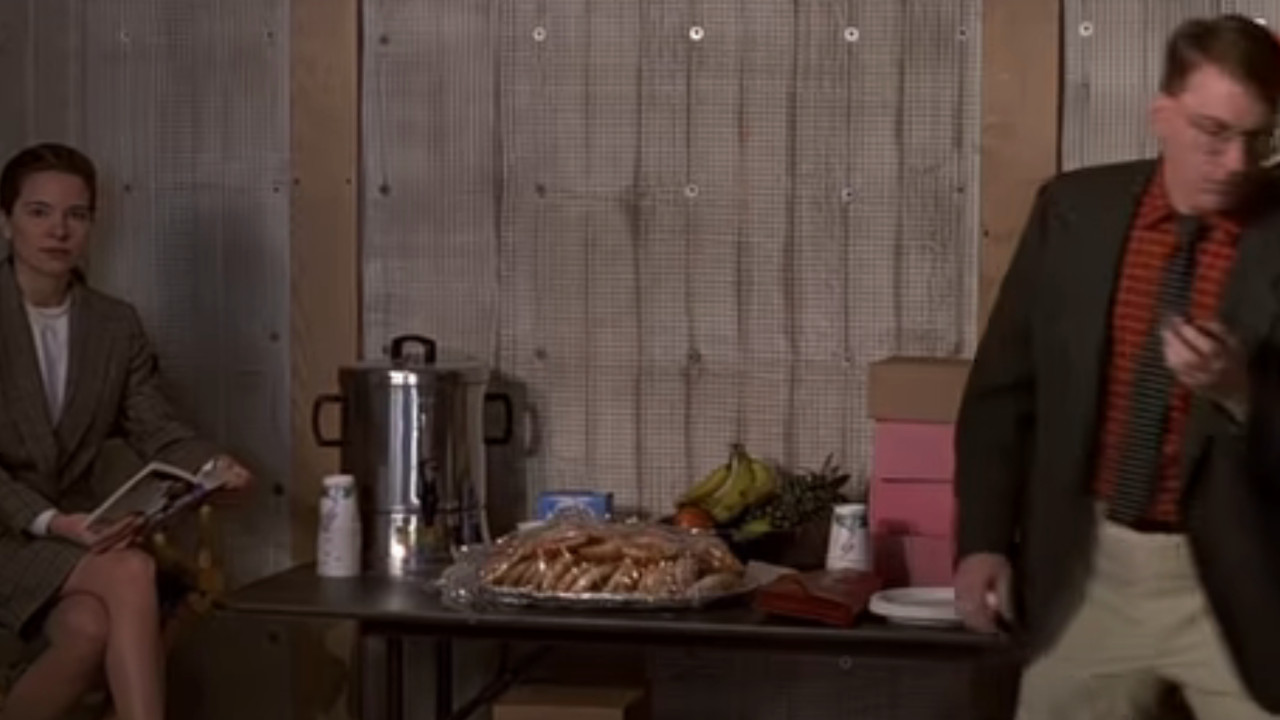
The Fake Elevator
Truman Show fans will point to different moments in which Truman reached the point of no return, but for me, it’s when he walks into a different building, and discovers the back of the elevator is missing and instead goes to a backstage area. It’s clearly out of place for a building, and everyone’s reactions make it clear they’ve been caught doing something they’re not supposed to be doing.
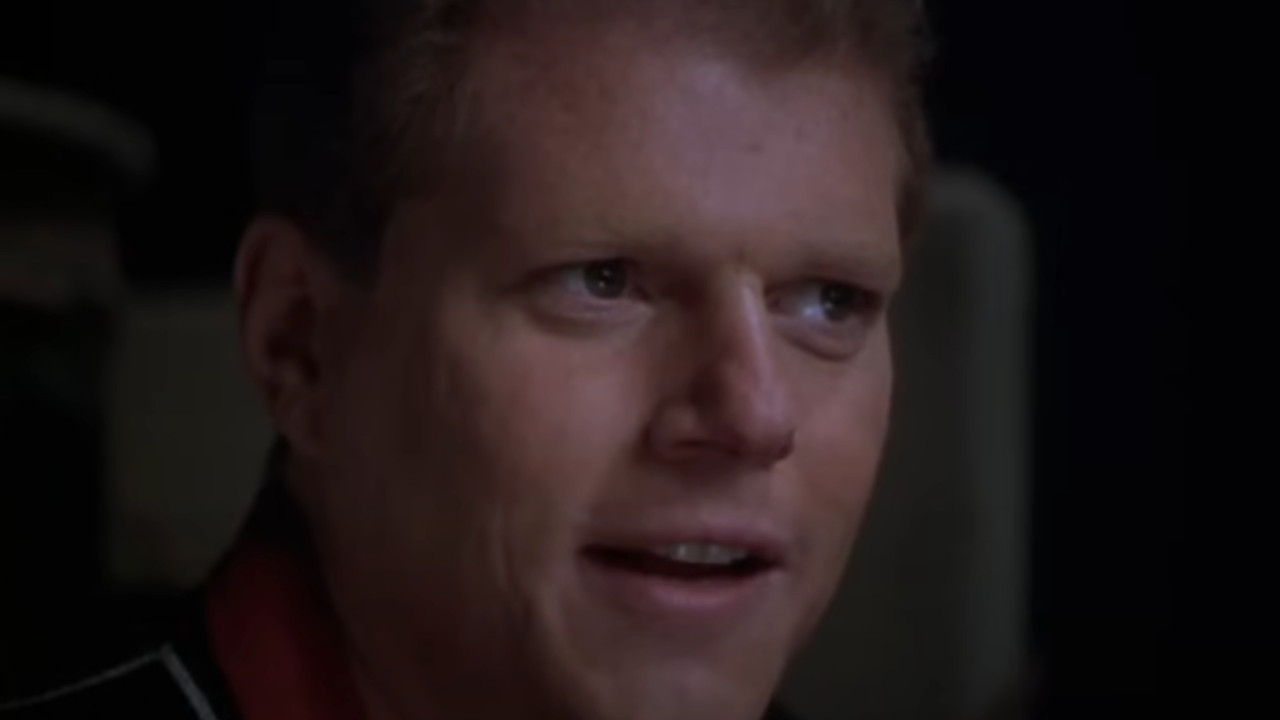
Marlon Delivering Christof's Lines
Early in The Truman Show, it becomes fairly obvious that Truman trusts his lifelong best friend Marlon more than anyone else, including his wife and mother. Anytime he’s in trouble, he immediately runs to talk it out with him and get his counsel. For awhile, it seems like a real friendship amidst the inauthenticity, but then the audience is suddenly given a different perspective, one where see Marlon reciting lines being read to him, and it all feels like a gross betrayal.
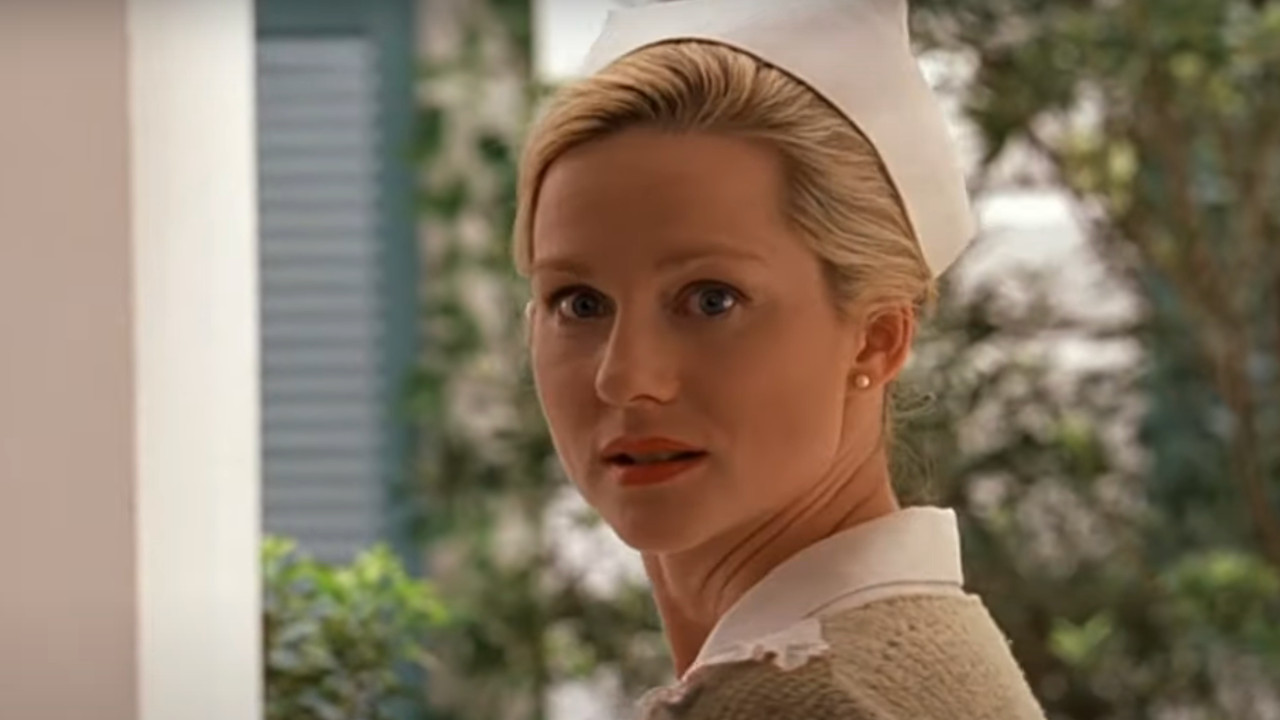
"I'll Cross My Fingers For You"
Many of Truman’s old pictures are suspect, especially the ones involving him vacationing as a kid in other places, but it’s his wedding photo that really becomes plot relevant. Truman discovers his wife Meryl with her fingers crossed, which he takes as a sign of her not fully committing. Later, when he tells her he’ll keep his fingers crossed, her worried look indicates she knows he’s catching on.
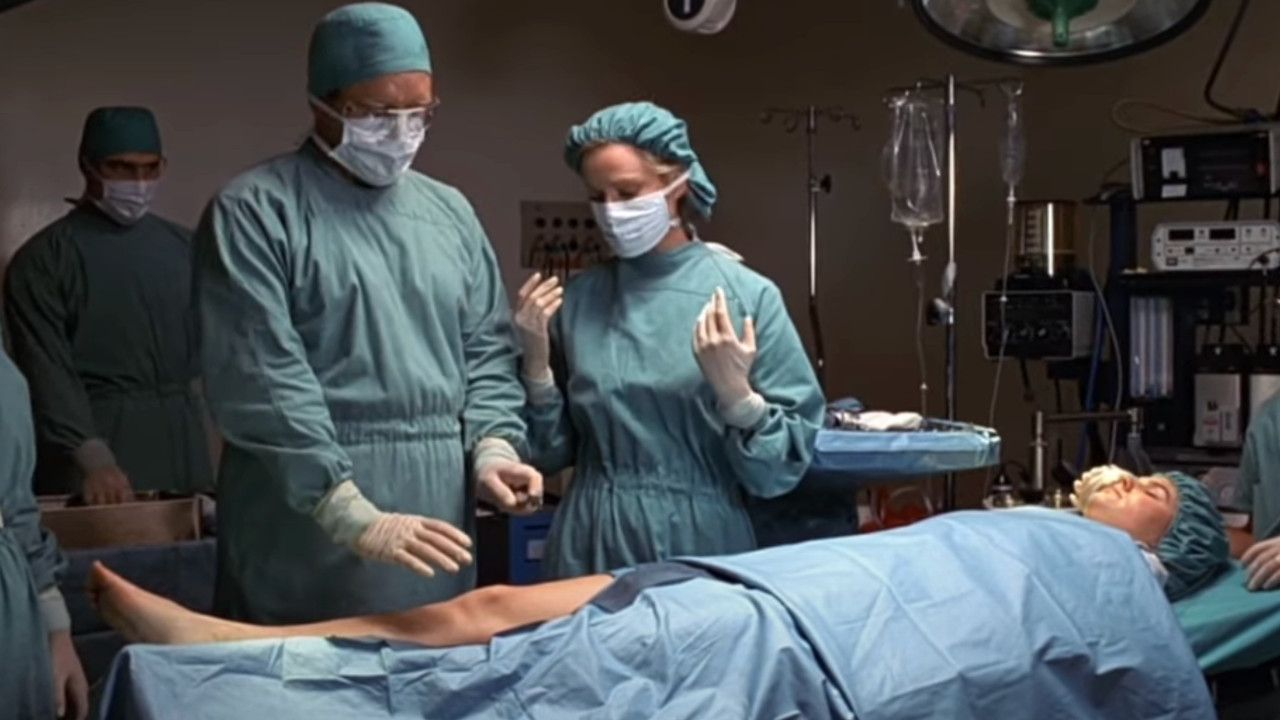
The Surgery
One day Truman decides to surprise Meryl at work. She’s a “nurse” and is supposedly in surgery. A clearly nervous “doctor” tries to perform an incision while Truman is watching, and it all goes hilariously wrong, complete with the patient waking up and needing to be given more “anesthetic.” It’s a hilarious reminder of how being hired as an actor to play someone with a specific job is not the same thing as knowing how to do that specific job.

The Truman Was Adopted By A Corporation Reveal
People have different ideas of personal privacy and consent; so, while I don’t know anyone that thinks what they did to Truman is acceptable, it’s a spectrum as to how offended people are when they initially find out what’s going on. That tends to change with this reveal, however, which is arguably the most shocking in the entire movie. Truman was in competition with other “unwanted pregnancies” and eventually earned the privilege of being adopted by a corporation.
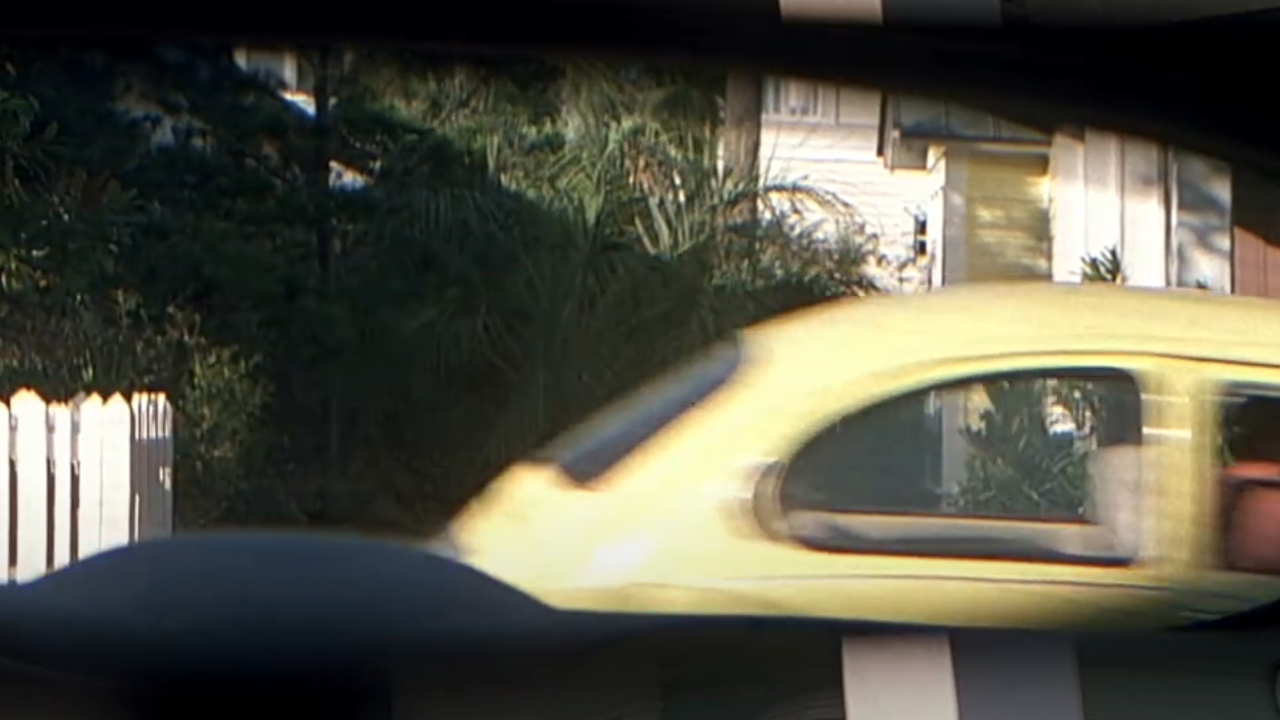
"There's The Dented Beetle"
Truman is living an authentic life. That’s the appeal of The Truman Show, and why millions of people watch it. Everyone else on Seahaven Island, however, is playing an acting role, and while some of those roles like Meryl and Marlon, involve living a long-term full life on the island and interacting with Truman, others are just there to be human beings and fill out his world. So, since they don’t have anything to actually do, they’re assigned to jobs like driving in circles and riding a bike around the block, which Truman ultimately catches on to.
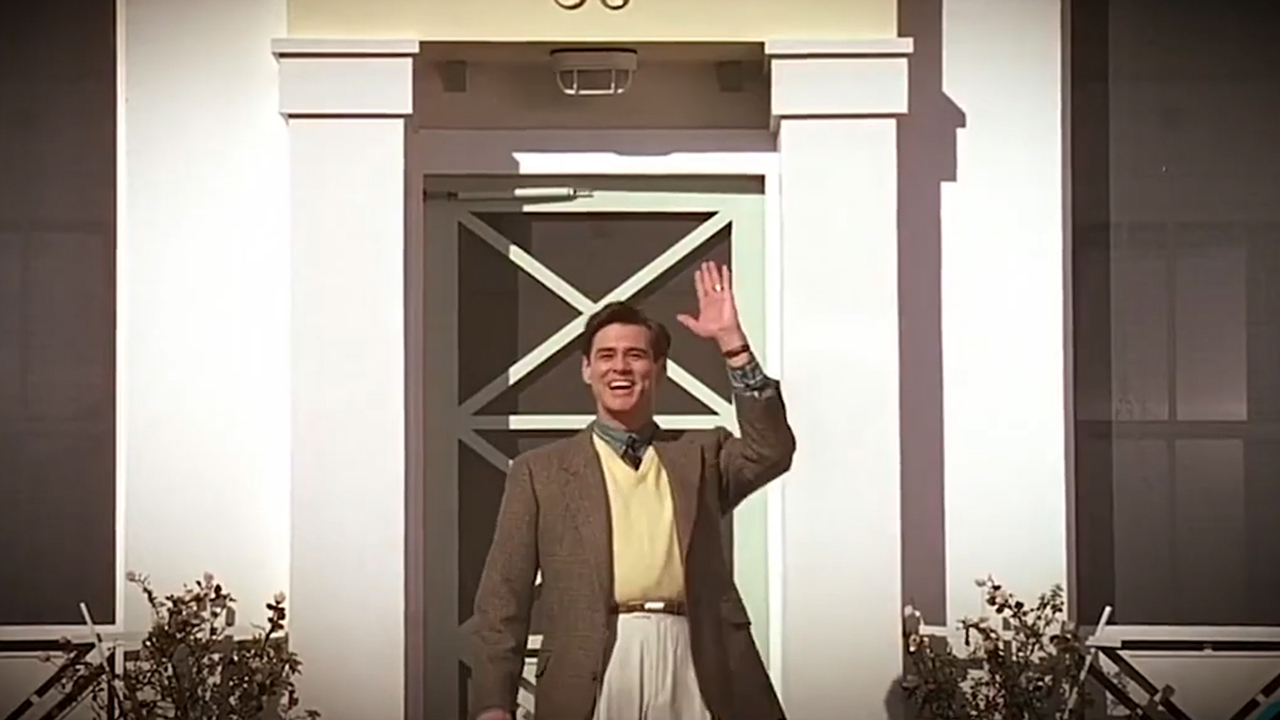
Good Afternoon, Good Evening And Good Night
The most iconic piece of dialogue in The Truman Show is definitely “Good Afternoon. Good Evening. And Good Night.” The phrase is so overly pleasant that it feels hollow. It’s the type of thing someone without better things on their mind would say. It’s what someone who is deeply kind but unable to connect would go with. That’s why it strikes most viewers as inauthentic when he’s going about his daily business, but also why when he says it at the end, after all he’s been through, it hits so much differently and is the right choice to end with Truman on.
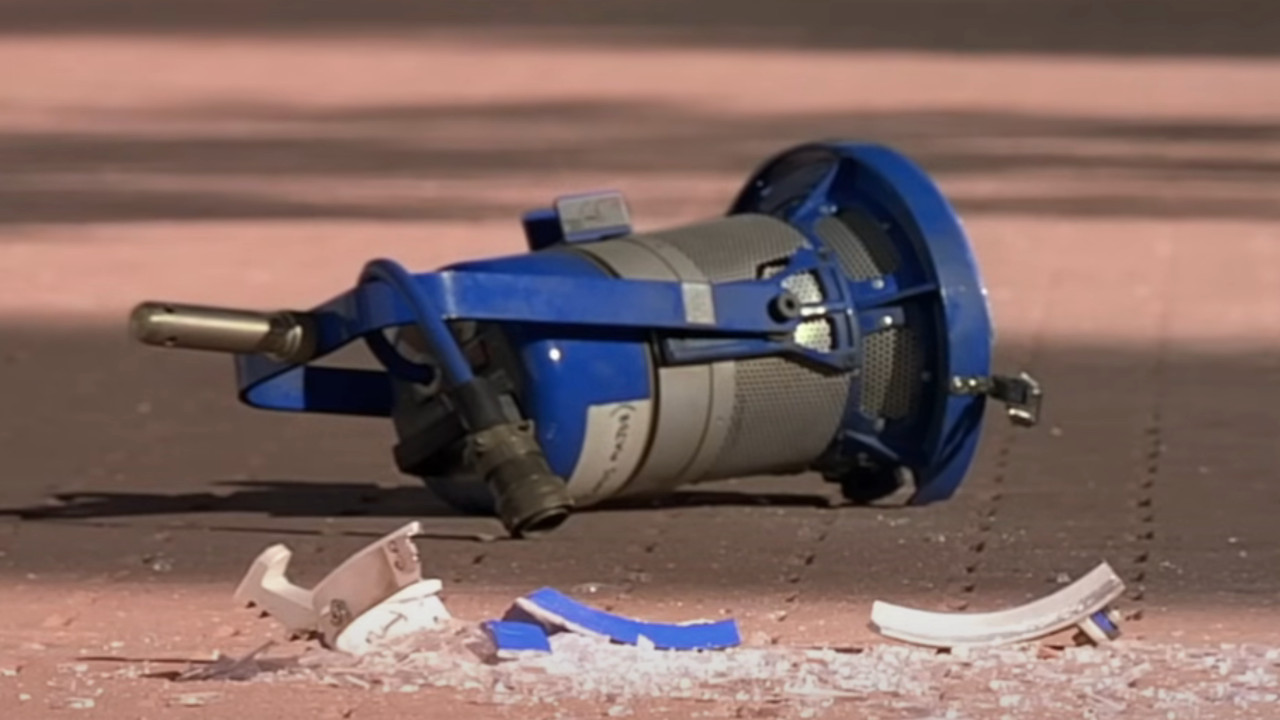
The Light Falling From The Sky
The Truman Show is really two different movies, based on whether you’re in on what’s going on or whether you’re lost like Truman. Most people who saw the film during its initial theatrical run were spoiled on the basic premise before watching it for the first time, but nowadays, people are discovering the movie on streaming without any prior knowledge. That makes this light falling early on a big clue for both them and Truman that all is not what it seems, especially since most people don't know what to make of the intro.

The Sunken Boat
The shot of this row boat filled with water is one of the visuals that has most stuck with me about the movie. It’s almost mean-spirited. You think who would ever leave that boat there, but then, it all makes sense on subsequent viewings as you start to contextualize it as a tool for helping to continue his fear of the water and further his desire to stay on the island.
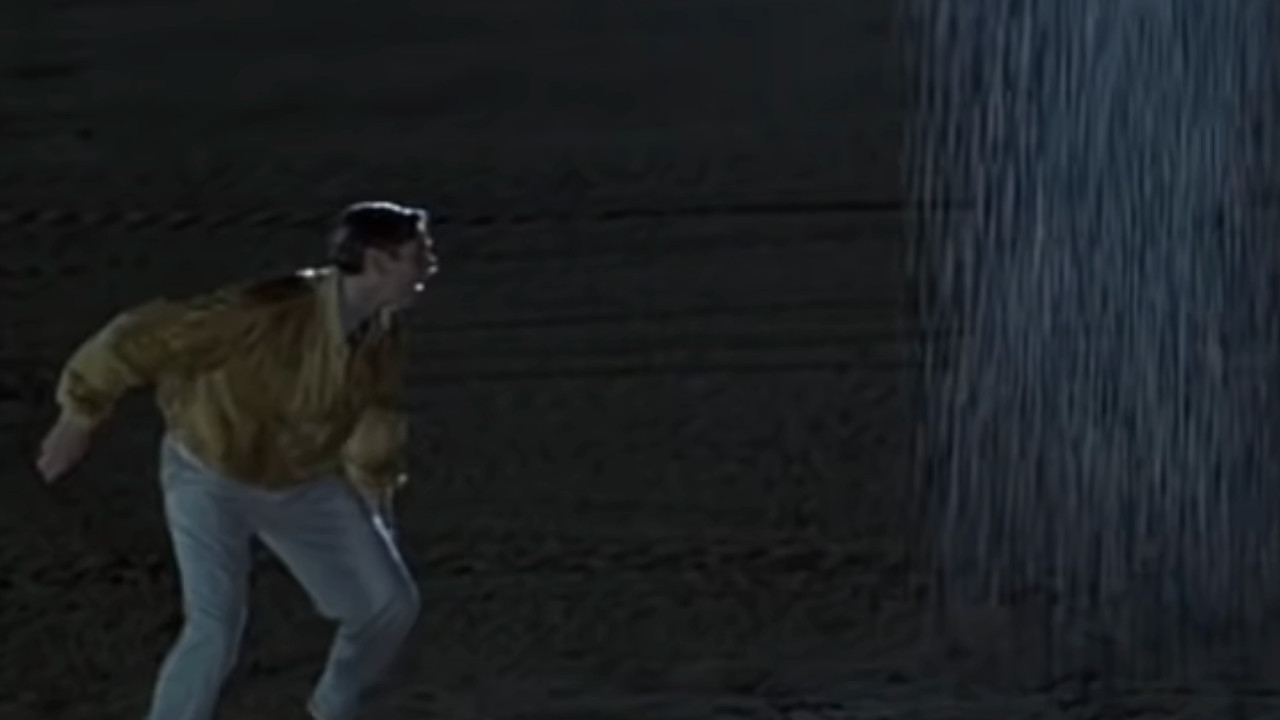
The Rain Falling Just On Truman
I’ve had a lot of conversations about this scene where rain only falls on Truman, and there are definitely a wide range of opinions on whether or not it works. It’s certainly physically possible given the environment he’s in, but it’s an open question as to whether the movie should have gone there. Some think it’s one of the most joyful and hopeful moments in the entire movie. Others see it as one of the film’s weaker. Either way, it’s iconic.

The Interview With Harry Shearer
Ed Harris’ Christof comes off as a weird guy pretty consistently throughout The Truman Show, but it’s this interview with Harry Shearer’s journalist that really hammers home his personality. He’s unbelievably arrogant and self-important, and it very quickly comes obvious he will never see any ethical issues with what he’s doing.
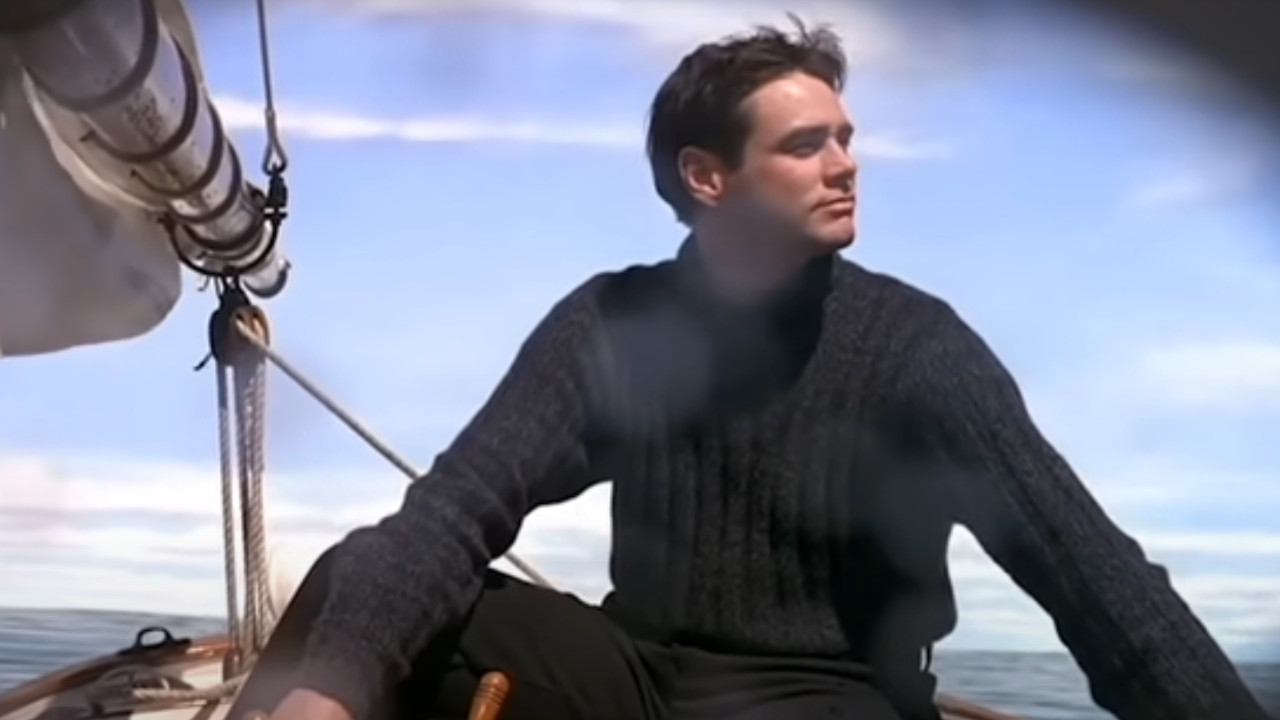
Truman's Final Escape
Truman’s quest throughout The Truman Show is mostly about uncovering the fake reality he’s a part of. It’s about living his ordinary life and seeing cracks in the world he’s presented with. His final escape is that same struggle but expressed much more literally. It’s his determination against his trauma and fear of the water to physically escape, and it’s a triumphant joy to watch him keep pushing.

Truman's Reunion With His Father
This is the best example of how truly fake Truman’s entire ecosystem is. His father, who he hasn’t seen for decades, reemerges to give him a big hug and return to his life, and even though as an audience, we love Truman and he’s quite obviously feeling extreme joy, we can’t feel anything but disgusted at how much he’s being manipulated. It’s one of those rare moments where we’re rooting against a character because we have more information than he does.

The Drive With Meryl
Meryl increasingly becomes a less sympathetic character as the movie goes on, as it becomes more obvious she's doing her job more than supporting her husband, but Truman's freakout ride with Meryl really humanizes her too. She's clearly uncomfortable the entire time, most prominently when he has her drive across the bridge. It's a reminder that even though she has more information, she still isn't in control.

Turning The Sun On
Seahaven Island might be man made, but it still operates off mostly logical rules familiar to the outside world (and was shot in the real world). That allows viewers to find commonalities with Truman, and it helps keep him from questioning his reality. The bus driver can’t say you’re not allowed to go. He has to say the bus is broken. Well, that logic all goes out the window during the search for Truman when Christof decides to turn on the sun when it should be nighttime. It’s a desperate, jarring move that everyone on set reacts to with shock.
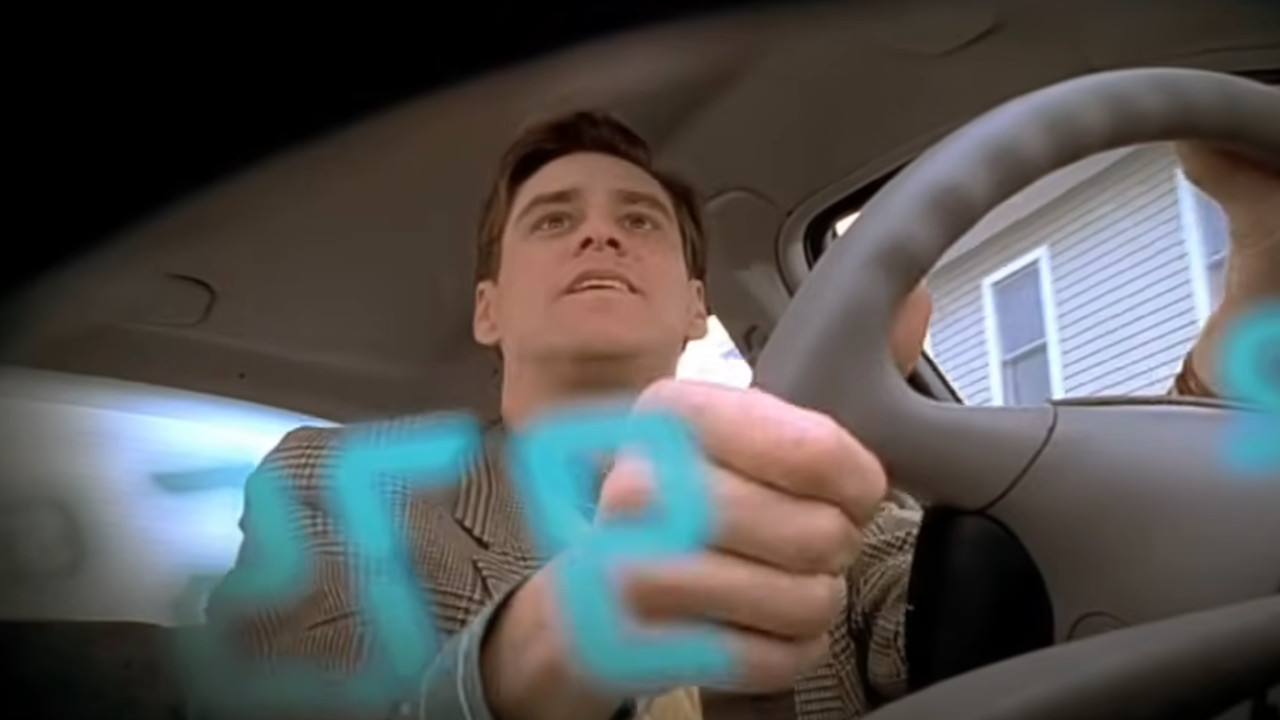
The Sound Frequency When He's Driving
Have you ever gotten the feeling you’re being followed? Truman is confronted with that panic early in the movie when the crew mistakenly plays the cast radio frequency into his car radio. A voice through the speaker describes everything he’s doing, down to the directions he’s taking. It’s like something out of a gangster movie with an FBI van, and helps show how much effort it takes to keep the ruse going.
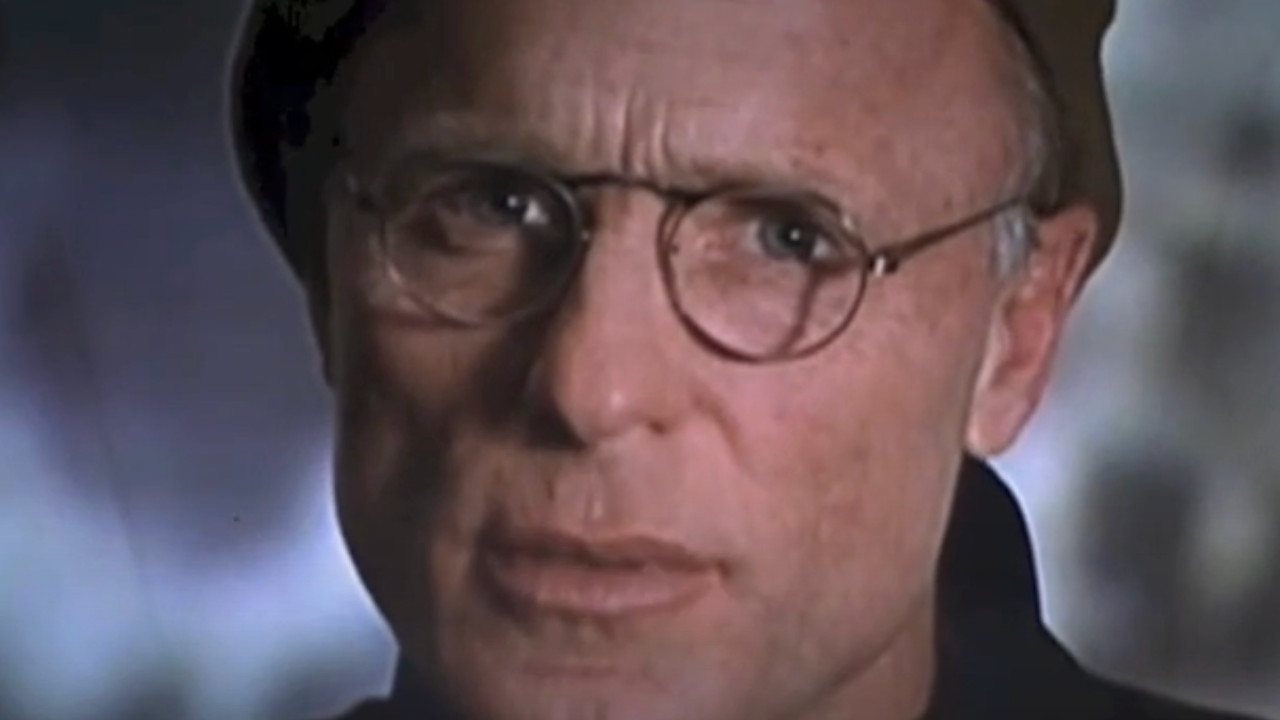
"Cut Transmission"
One thing The Truman Show always does is stay on the air. There are no commercials, as the show only uses product placement, but after all the cameras lose Truman during his escape, Christof makes the bold decision to cut transmission. It produces immediate pushback from the network, but Christof argues they’re probably doing higher ratings with the graphic than they ever have. Even if that’s the case, everyone involved knows they need to start the transmission again ASAP, which they do to capture Truman’s final moments on his show.
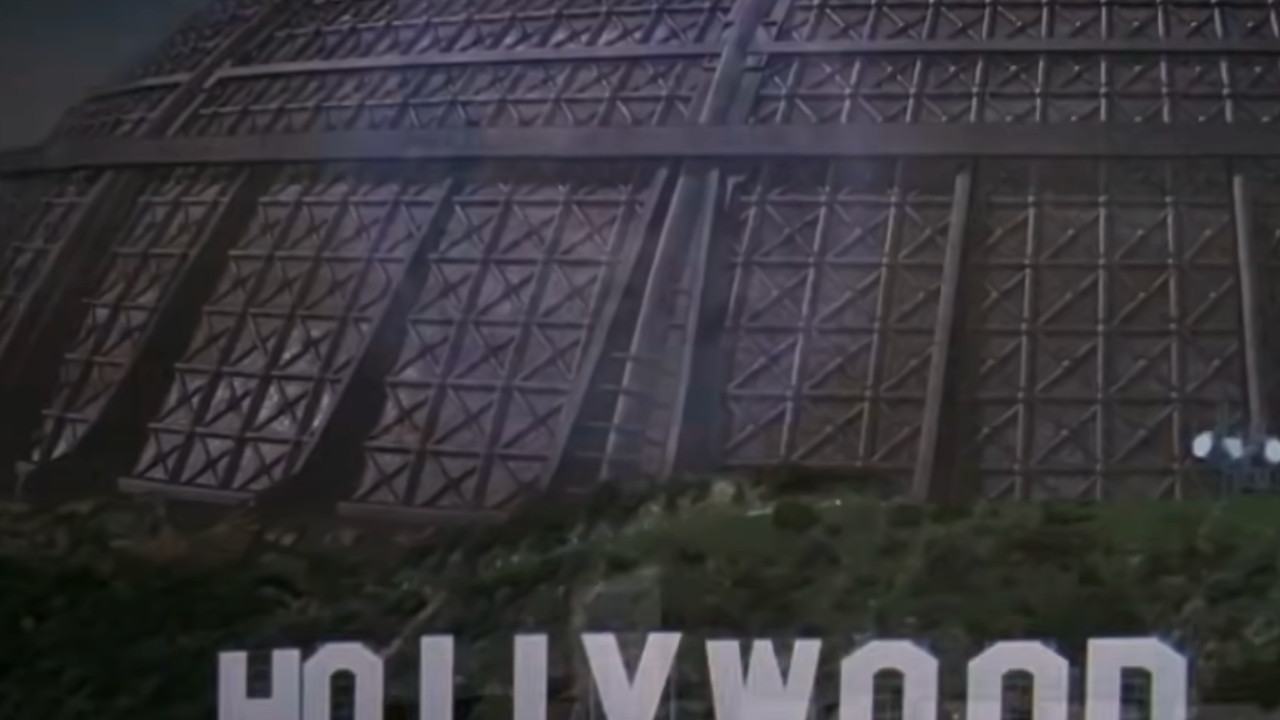
The Set Reveal
Part way through The Truman Show’s runtime, director Peter Weir starts consistently giving us more perspectives outside just Truman’s. That allows the audience to see more of the context around the hit reality program and to get the backstory of how it came to be. As part of that, we see the intro viewers see on television, and it features a jaw-dropping shot of the giant dome set, which can apparently be seen from space. It really helps illustrate the enormity of what’s happening.

The Score
Despite winning for their score at The Golden Globes, Burkhard Dallwitz and Philip Glass didn’t get an Oscar nomination for The Truman Show. That’s too bad because I really like their work here. The score finds a good balance between a hollow, inauthentic version of the 1950s that almost seems melodramatic at times throughout the movie and a soaring, hopeful quest that feels alive and heroic.
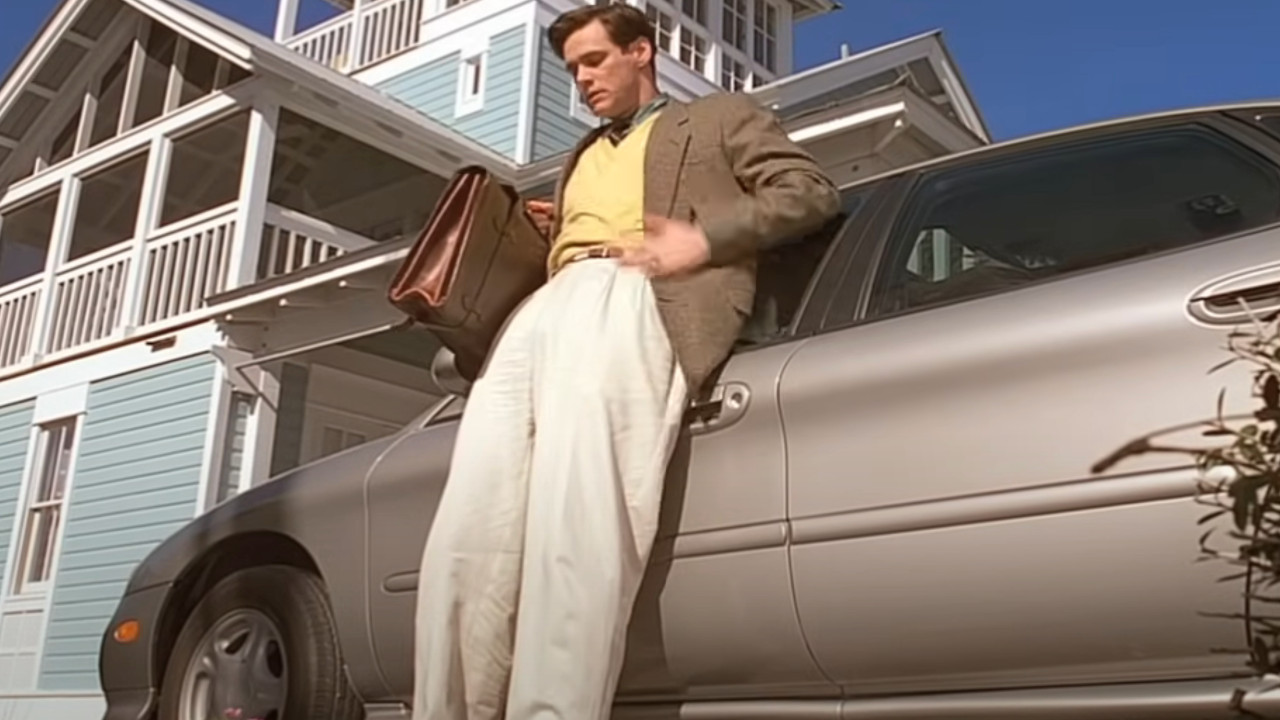
All The Weird Camera Shots
One of my absolutely favorite things about The Truman Show is the camera work. Cinematographer Peter Biziou received a BAFTA nomination for his work here and should have gotten a nod from the Oscars too. It’s not that every shot is the best possible shot. There are very specifically some weird and unnatural angles, but that’s kind of the point. Our perspective shifts to all kinds of weird angles that make it feel like he’s occupied in a space that’s got thousands of cameras but often times not the perfect one for what’s needed.
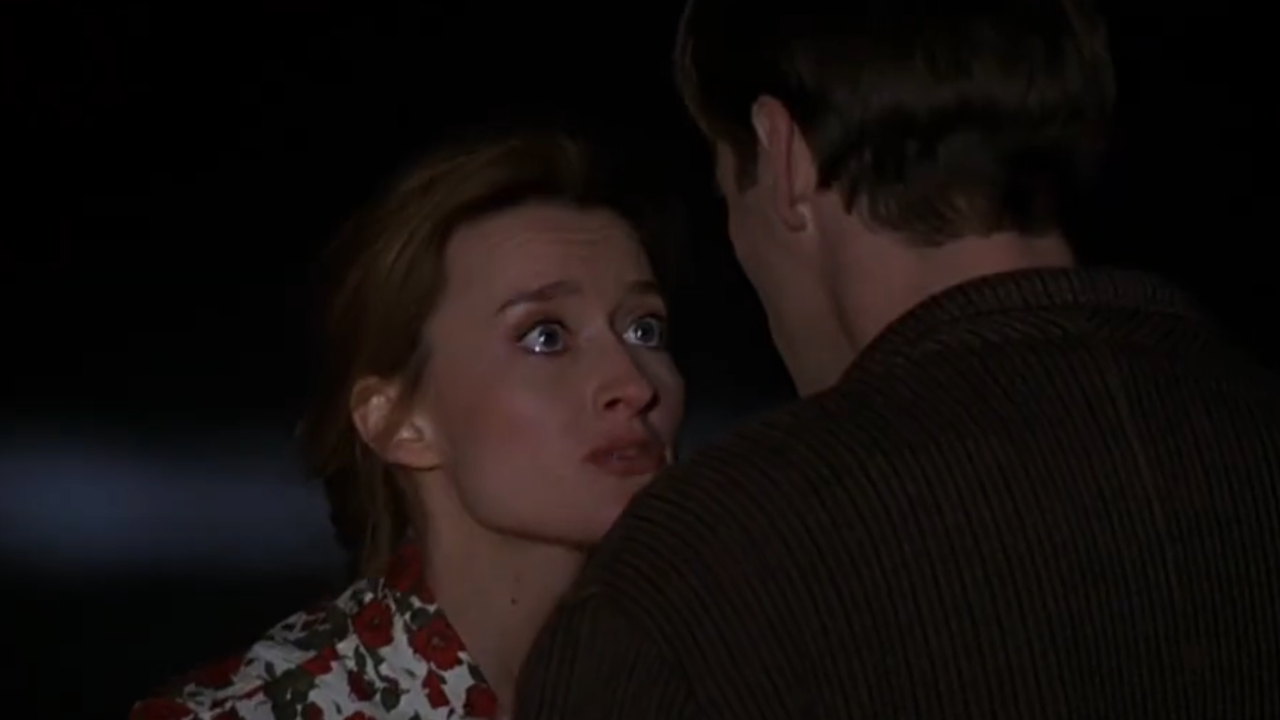
Lauren's Attempt To Tell Him It's All Fake
Truman is so inside his bubble, especially in his younger years, that when Lauren attempts to tell him he’s on a TV show, he has no idea what she’s talking about. He refuses to accept anything could be amiss about his reality. Even years later when he pines for her, the part he focuses on is always Fiji, it’s never the rest of her speech in which she tells him everything has been created just for him.
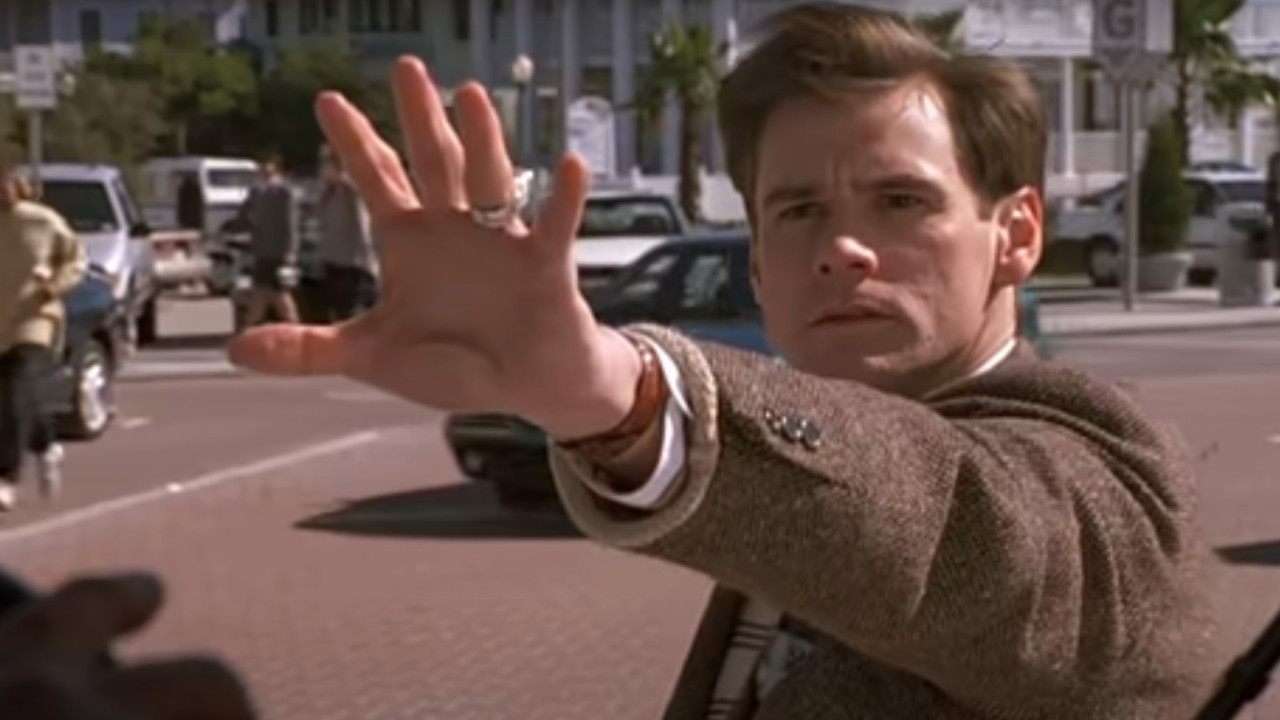
Truman Stops Traffic
Truman’s initial questions about the world around him largely manifest themselves in him changing his routine. He enters buildings he’s never been in before. He starts exploring, just as he wanted to when he was a kid but within Seahaven Island. The most dramatic example of that, at least before he runs from the men in the hazmat suits is when he walks out into traffic and stops it. He’s testing to see whether there are consequences to his actions and whether the world really revolves around him. There’s not, and it does.
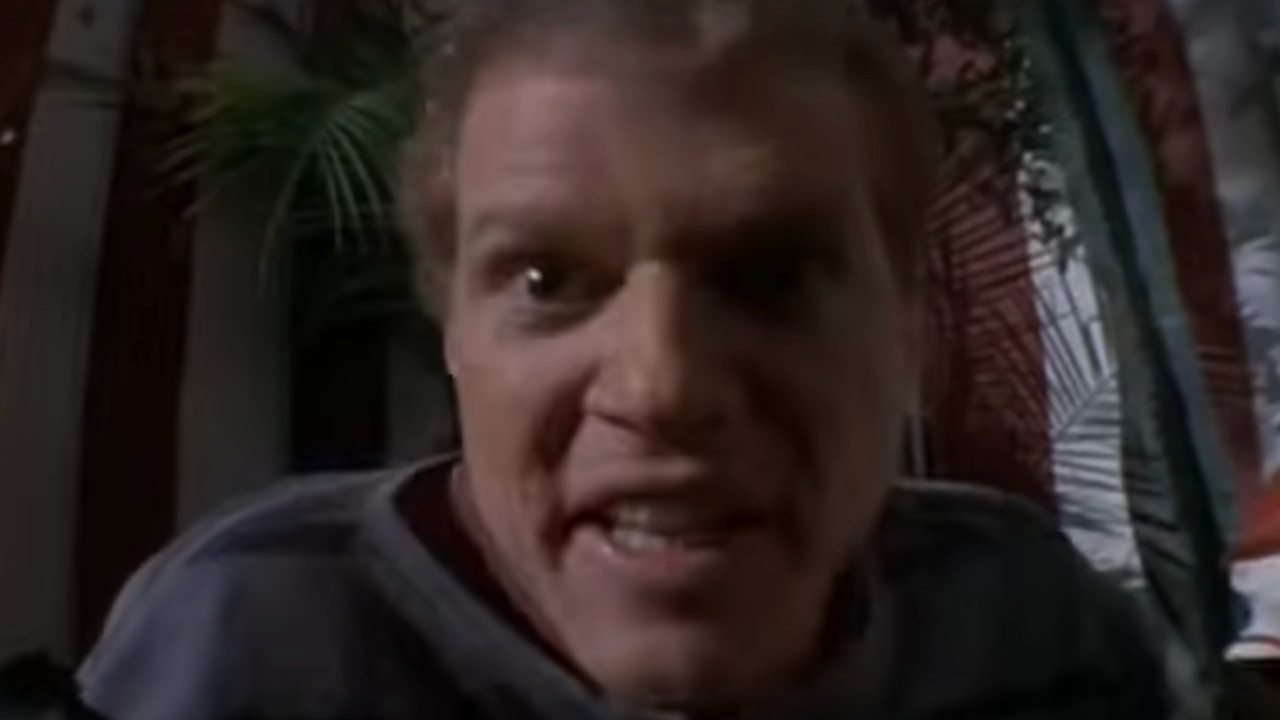
Marlon Looks Into The Camera
Everyone in The Truman Show is aware they’re on a television show except Truman. That means the number one rule is everyone needs to go about their lives without breaking the fourth wall. That means trying not to look at the cameras, but during the search for Truman, that rule is dramatically broken when Marlon, desperately searching for Truman, looks directly into the camera and says he’s gone. It’s a moment so out of the norm that Christof decides to cut the transmission.

"Where's The TV Guide?"
I don't really know what to make of the last moment in the movie. The transmission cuts for the final time, and the security guards ask what else is on and look for the TV Guide. In some ways, it's an extremely funny juxtaposition for Truman's final emotional escape which just came before. On the other hand, however, it's also a sad commentary on how quickly people move on and makes you wonder what the future might hold for Truman.
Mack Rawden is the Editor-In-Chief of CinemaBlend. He first started working at the publication as a writer back in 2007 and has held various jobs at the site in the time since including Managing Editor, Pop Culture Editor and Staff Writer. He now splits his time between working on CinemaBlend’s user experience, helping to plan the site’s editorial direction and writing passionate articles about niche entertainment topics he’s into. He graduated from Indiana University with a degree in English (go Hoosiers!) and has been interviewed and quoted in a variety of publications including Digiday. Enthusiastic about Clue, case-of-the-week mysteries, a great wrestling promo and cookies at Disney World. Less enthusiastic about the pricing structure of cable, loud noises and Tuesdays.
